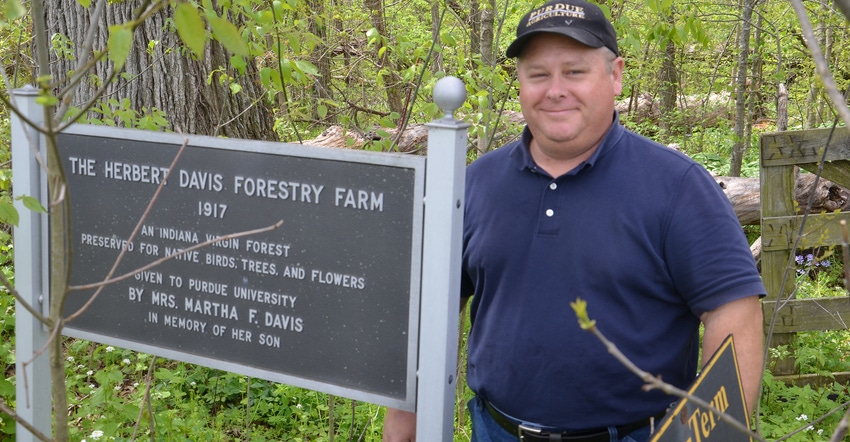June 19, 2017

There aren’t that many places in Indiana where you can find a stand of virgin timber. If you’re looking for a sizable acreage that has been studied by biologists for a hundred years, your task might feel like looking for a needle in a haystack.
However, such a place exists in Randolph County, north of Farmland. It’s part of the Davis-Purdue Agriculture Center. The center celebrates its 100th anniversary this year, with a field day on Aug. 31. Talks and tours related to the virgin timber stand will be one part of the daylong event.
Jeff Boyer, current superintendent of DPAC, says this particular forest tract played a key role in creating the ag center, and in Purdue’s initial involvement.
“The farm was owned back then by Martha Davis,” Boyer says. “She wanted to leave the woods to someone who would keep it as a forest. Her goal was to honor the memory of her son, Herbert Davis, who had already passed away. Apparently he was interested in studying nature, and the woods meant a lot to him and his mother.”
When Mrs. Davis passed away in 1917, the process of leaving the farm, including the 100-acre woods, began, Boyer says. It turned out to be a long, drawn-out process, with Purdue University not gaining full control, according to old records, until 1921. However, Purdue professors interested in forestry and ecology were busy studying the site long before 1921, Boyer says.
Unique treasure
Pictures document that a Purdue professor actually set up a small camp near the woods for a couple of summers. At that point in those early days, the location was known as the Herbert Davis Forestry Farm.
Later, Burr Prentice of Purdue’s Forestry Department painstakingly inventoried and marked every tree in the forest!
“What’s amazing is that he and his helpers did a complete inventory of every tree in the woods,” Boyer relates. “Based on their estimates then, some trees in the virgin timber stand are 400 years old today.”
Some trees were marked with tags that resemble nails. The map and identification of trees has been maintained and updated to this day, Boyer says.
Since it is a virgin timber stand, the goal is to maintain the forest by letting nature take its course, Boyer says. No cutting for timber or other kind of clearing takes place in this woods. Some trees eventually die and fall. The ability to observe how the forest evolves naturally over time is part of the beauty of having such a unique area, Boyer adds.
Today, DPAC also has another 50-acre woods, located on land that was acquired later. Harvest is allowed in this forest, Boyer says. It’s sometimes used for research projects. Purdue faculty and students study the effects of such practices as clear-cutting, forest regeneration and even timber stand improvement. While crop, soybean and wheat research are also part of the ag center’s goals, its two forests add opportunities that don’t exist at many other places in the state.
Current plans call for maintaining the virgin forest into the future. It’s a unique part of Indiana’s past that still reveals secrets about how trees grow and mature yet today.
You May Also Like




